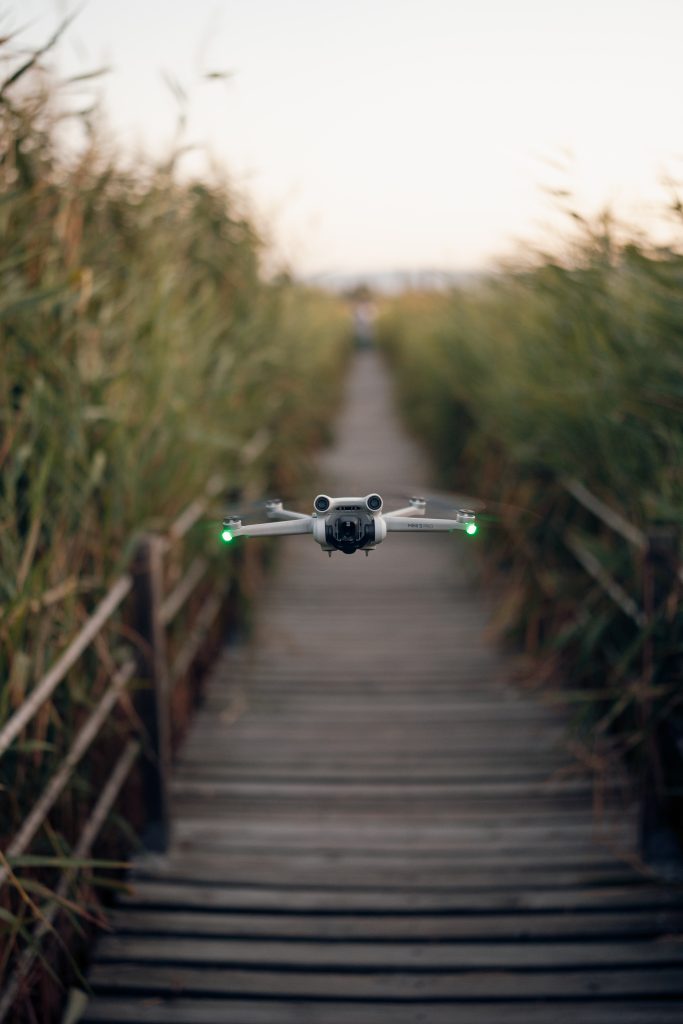What Is The Next Big Wearable Technology?

I can’t help but wonder what the next big thing in wearable technology will be. It seems like every year, there’s a new gadget or device that promises to revolutionize our lives in some way. From fitness trackers to smartwatches, we’ve seen it all. But what’s next? Will it be something we wear on our bodies, or perhaps something even more integrated into our daily lives? It’s an exciting thought, and I can’t wait to see what the future holds.
Understanding Wearable Technology
Definition of Wearable Technology
Wearable technology refers to electronic devices that can be worn on the body, typically in the form of clothing, accessories, or implants. These devices are equipped with sensors, microprocessors, and wireless communication capabilities to collect and transmit data, providing users with real-time information and enhancing their overall experience.
Different Types of Wearable Technology
There are various types of wearable technology available in the market today. Some common examples include smartwatches, fitness trackers, virtual reality headsets, and smart glasses. Each type of wearable technology serves a specific purpose and offers unique features and functionalities.
Evolution of Wearable Technology
Wearable technology has come a long way since its inception. It has evolved from simple pedometers and heart rate monitors to advanced devices that can track our sleep patterns, monitor our health, and even enhance our virtual reality experiences. The development of smaller and more powerful sensors, improved battery life, and advancements in wireless connectivity have fueled the rapid evolution of wearable technology.
Current State of Wearable Technology
Market Leaders in Wearable Tech
Currently, the wearable technology market is dominated by industry giants such as Apple, Samsung, Fitbit, and Garmin. These companies have established themselves as market leaders by consistently delivering innovative and high-quality wearable devices that cater to different user needs and preferences.
Most Popular Wearable Tech Devices
Among the most popular wearable tech devices are smartwatches and fitness trackers. Smartwatches, such as the Apple Watch and Samsung Galaxy Watch, not only tell time but also offer features like notifications, health tracking, and contactless payments. Fitness trackers, like Fitbit and Garmin devices, monitor daily physical activities, heart rate, sleep patterns, and provide insights to help users achieve their fitness goals.
Benefits and Challenges of Using Wearable Tech
Wearable technology offers numerous benefits, including convenience, real-time data tracking, and improved health and wellness monitoring. These devices allow users to stay connected, track their physical activity, and receive personalized insights and recommendations. However, challenges exist, such as limited battery life, data privacy concerns, and the steep learning curve associated with adopting new technology.

Prediction Methodologies for Future Wearable Tech
Technological Forecasting
Technological forecasting is a methodology used to predict the future advancements and trends in wearable technology. It involves analyzing historical data, market research, and expert opinions to identify potential future developments and their potential impact on the industry.
Delphi Method
The Delphi method is a systematic approach that gathers inputs from a panel of experts to reach a consensus on future predictions. It involves a series of questionnaires and iterations to narrow down and refine the experts’ opinions to achieve a collective prediction.
Trend Analysis
Trend analysis involves studying the current market trends and patterns to identify potential future directions for wearable technology. By analyzing factors such as consumer preferences, technological advancements, and market dynamics, trend analysis helps predict the direction in which the industry is likely to evolve.
Scenario Analysis
Scenario analysis involves creating different scenarios or future scenarios and analyzing the potential impact of each scenario on wearable technology. This approach helps identify potential opportunities and challenges that may arise in each scenario and enables companies to prepare and adapt accordingly.
Augmented Reality (AR) Glasses as the Next Big Thing
Understanding AR Technology
Augmented Reality (AR) technology refers to the overlaying of digital information or virtual objects onto the real world. AR glasses use advanced optics and sensors to display virtual content, allowing users to interact with the digital world while remaining connected to their physical surroundings.
Current Applications of AR Glasses
AR glasses have found applications in various industries, including gaming, healthcare, education, and industrial training. In gaming, AR glasses offer immersive experiences by overlaying virtual elements onto the real world, creating a blend of digital and physical realities. In healthcare, AR glasses can assist surgeons during complex procedures by providing real-time data and visual overlays.
Potential Future Improvements in AR Glasses
Future advancements in AR glasses aim to improve their functionality, design, and user experience. These improvements may include enhanced display resolutions, longer battery life, more comfortable form factors, and improved gesture recognition capabilities. Additionally, advancements in AR content creation tools and platforms will enable developers to create more realistic and interactive experiences.

Health and Wellness Monitoring Wearables
Latest Developments in Health Tracking Devices
Health tracking devices, such as smartwatches and fitness trackers, have witnessed significant advancements in recent years. These devices now offer more accurate and comprehensive health monitoring features, including heart rate tracking, ECG monitoring, sleep analysis, and stress management tools.
Possibility of Advanced Health Monitors
The future of health monitoring wearables holds immense potential for advanced features and capabilities. We can expect wearables that can monitor blood glucose levels, detect early signs of diseases, track hydration levels, and even provide personalized health recommendations based on real-time data.
Impact and Use of AI in Health Wearables
Artificial Intelligence (AI) has made significant contributions to the field of health wearables. AI algorithms can analyze large amounts of health data collected by wearables and provide meaningful insights and predictions. This can lead to early detection of health issues, personalized recommendations, and improved preventive healthcare.
Smart Clothing and e-Textiles
Definition and Current Applications of Smart Clothing
Smart clothing, also known as e-Textiles, refers to garments integrated with electronic components and sensors. These components can monitor various body metrics, detect environmental conditions, and even enhance the functionality of the clothing. Current applications of smart clothing include fitness tracking, temperature regulation, and posture correction.
Potential Advancements in e-Textiles
The future of e-Textiles holds exciting possibilities for advancements in functionality and comfort. We can expect clothing that can dynamically adjust its insulation properties based on environmental conditions, clothing that can monitor vital signs and offer personalized health recommendations, and even clothing that can harvest energy from body movements.
Challenges in the Adoption of Smart Clothing
The adoption of smart clothing faces challenges such as high costs, limited availability of compatible devices, and concerns regarding privacy and data security. Overcoming these challenges will require collaboration between technology companies, fashion designers, and regulatory bodies to ensure consumer acceptance and trust.

Enhancement Wearable Devices
Overview of Enhancement Devices
Enhancement wearable devices aim to augment human capabilities or provide additional functionalities beyond what is naturally possible. Examples of enhancement devices include brain-computer interfaces, exoskeletons, and smart prosthetics. These devices can enhance cognitive abilities, physical strength, and mobility.
Future Perspective for Enhancement Devices
The future perspective for enhancement devices holds promise for further advancements in prosthetics, brain-computer interfaces, and gene-editing technologies. These advancements could revolutionize healthcare, rehabilitation, and offer new possibilities for individuals with disabilities or injuries.
Ethical Consideration of Enhancement Devices
The development and adoption of enhancement devices raise ethical concerns related to fairness, privacy, and consent. It is crucial to ensure equal access to enhancement technologies, protect user privacy, and establish guidelines for responsible use to prevent potential misuse or discrimination.
Wearable Tech in Sports and Fitness
Current Role of Wearable Tech in Sports
Wearable technology has become an essential tool in sports and fitness. Athletes and fitness enthusiasts use wearable devices to track their performance, monitor vital signs, and optimize their training routines. Wearable tech provides real-time feedback, helps prevent injuries, and enables better performance analysis.
Next Big Predictions for Sports Wearables
The next big predictions for sports wearables include advancements in biometric tracking for improved performance analysis, integration with virtual reality for enhanced training experiences, and enhanced durability and water resistance for various sports activities.
Challenges in Implementing Wearable Tech in Sports
Implementing wearable technology in sports faces challenges such as accurate data collection, ensuring device durability, and managing the vast amount of data generated. Overcoming these challenges will require collaboration between technology providers, sports teams, and governing bodies to ensure reliable and standardized data collection methods.

Nanotechnology in Future Wearables
Understanding Nanotechnology
Nanotechnology involves the manipulation of matter on an atomic or molecular scale, typically within the range of 1 to 100 nanometers. In the context of wearable technology, nanotechnology can revolutionize materials used in wearables, enhance energy efficiency, and miniaturize electronic components.
Potential Role of Nanotech in Wearables
Nanotechnology can play a significant role in developing wearable technology with improved performance and functionality. Nanomaterials can enhance the durability and flexibility of wearables, improve energy storage capabilities, and enable more efficient sensors for accurate data collection.
Challenges in Incorporating Nanotechnology
Incorporating nanotechnology into wearable devices faces challenges related to cost, scalability, and environmental impact. Scaling up nanomaterial production and ensuring the safe disposal of nanomaterial waste require careful consideration and long-term planning.
Implications for Privacy and Security in Future Wearables
Current Privacy Concerns with Wearable Tech
Current wearable technology raises privacy concerns related to the collection and storage of personal data. Wearables collect sensitive information such as location, health data, and biometric measurements, which must be protected from unauthorized access and misuse.
Predicted Privacy Issues for Future Devices
Predicted privacy issues for future wearable devices may include increased data breaches, targeted advertising based on personal data, and the potential for unauthorized surveillance through built-in cameras or microphones. Addressing these concerns will require robust data protection measures, transparent privacy policies, and user empowerment in managing their data.
Potential Security Measures for Future Wearables
To ensure the security of future wearables, manufacturers must implement stringent security measures such as data encryption, two-factor authentication, and secure communication protocols. Regular software updates and user education on best practices for device security will also be essential in mitigating potential security risks.
In conclusion, wearable technology is continuously evolving and has the potential to transform various aspects of our lives, from healthcare to sports and everyday activities. By understanding the current state of wearable tech, predicting future trends, and addressing the challenges and implications associated with these technologies, we can harness the full potential of wearables and unlock their benefits in a responsible and secure manner. The next big wearable technology is waiting to be discovered, and it will undoubtedly shape the way we live and interact with the world around us.







